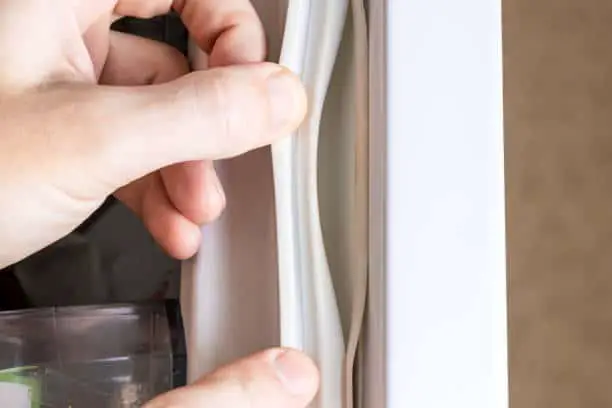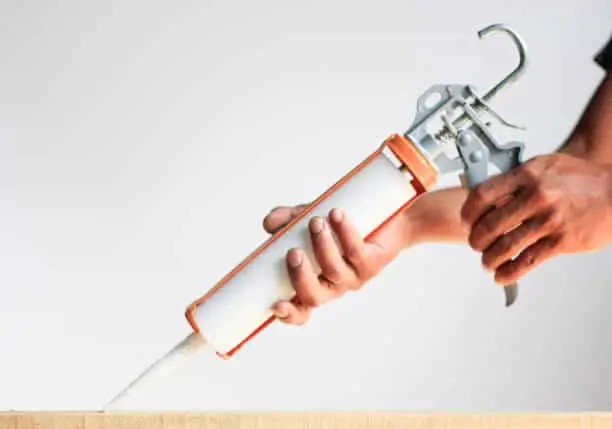When you need to glue two surfaces together, it’s not always easy with whatever glue you have on hand. Different materials require different adhesives, and the way they are glued together also needs to be considered.
For example, rubber is a challenging material to bond. Furthermore, many different types of rubber are available, and they are used in various projects requiring diverse thermal, electrical, chemical, and physical properties.
How to glue neoprene to rubber? Let’s take a closer look at the post below to know the things when gluing neoprene and rubber.
Things You’ll Need

Preparation is always essential before you start working, so what will you need to Glue Neoprene to Rubber correctly?
Here are the necessary materials and notes for your project.
- Of course, the essential thing you can’t do without is glue neoprene to rubber is the best adhesive. These include superglue, neoprene rubber binders, and contact types of cement.
Each bond works to stick different items together for a long time, but you need the best glue to create flexibility.
However, the best glue for rubber is not always the right choice for synthetic rubber, which is also challenging to handle.
- You need to apply pressure to create an effective bond when you attach neoprene to rubber. Depending on the size of your project, prepare tongs or any other tool to apply pressure.
- Prepare sandpaper to roughen neoprene.
- Please use a cleaning solution to clean the surface without leaving dust and residue, as they can affect the effectiveness of the adhesion.
- Use a hair dryer or heat gun to warm both surfaces before applying glue.
A Step-by-Step Guide On How to Glue Neoprene to Rubber

After you have prepared all the necessary items, you can start this work. The following is a detailed guide on how to glue neoprene to rubber.
Step 1: Prepare Both Surfaces
If you have ever done work similar to this project, you probably know that simply gluing these two surfaces together doesn’t work.
You must prepare the surface sufficiently to help the glue have a specific adhesion and create a solid and durable bond.
Therefore, synthetic and rubber surfaces must be thoroughly prepared before gluing. This job does not take much time.
The goal is that both surfaces are free of dust, grease, debris, or other stains.
Dip a clean cloth in isopropyl alcohol to clean both surfaces. Then use a clean towel to wipe the slats or wait for them to dry naturally.
Step 2: Apply the Glue

Before you apply glue to surfaces, you must wear gloves to prevent the glue from sticking to your skin.
If you use cement contact sealant or neoprene rubber contact adhesive, you should use a clean brush.
Start applying glue to the two surfaces, and don’t forget to align the two surfaces.
Press them firmly together. You can now use tools such as clamps or tape to hold the two surfaces together for the glue to seal thoroughly.
If you are using super glue, then after applying it, you just need to press the two surfaces together for a few seconds.
Drying and curing times will vary depending on the glue you use, so read the manufacturer’s instructions for the exact gauge and total cure times.
FAQs
1. What Is the Best Glue for Neoprene Rubber?
3M Neoprene Rubber is a high-performance, solvent-based general-purpose adhesive. At the same time, it has excellent heat resistance and provides fantastic durability, commonly used to bond most rubber and gasket materials.
In addition, it is also used to process large-area rubber sheets, gaskets, etc.
2. Will Gorilla Glue Adhere to Rubber?
Gorilla Glue can be used on most common rubbers, but it will not work well on more specialized rubbers such as Silicone and EPDM-Rubber.
Therefore, determine the correct type of rubber that you want to stick with this glue; if it is regular rubber, you can use Gorilla Glue. But if it is a specialized rubber, it is best to find another adhesive more suitable for processing.
3. How Do You Stick Neoprene?
To glue any neoprene effectively, you must apply pressure to about 15 pieces of paper when both surfaces are in contact.
When this technique is used with the Bonding Poly Process, the neoprene will be covalently bonded, creating the strongest bond.
4. What Is the Strongest Contact Adhesive?
Currently, the most potent adhesive is the DELO MONOPOX. This is a modified version of the DELO MONOPOX HT2860 with high heat resistance.
In addition, this epoxy resin has the effect of forming an extremely dense network during the heat-curing process.
5. How Do You Make Rubber Cement?
The production of rubber cement is not complicated. First, you break the rubber into small pieces.
Then mix the rubber crumbs with hexane or heptane-based solvents and pour the mixture into different-sized containers.
Thus, you have completed the process of creating rubber cement.
6. Which Is the Best Glue to Use?
The cheapest way to glue rubber to neoprene is super glue and cement.
Those adhesives will be good for long-term adhesion but not ideal for high-flexing glued parts.
Neoprene adhesive will be the best way to achieve flexible parts that are bonded permanently.
The Bottom Line
Overall, the Glue Neoprene to Rubber approach should not be too difficult for anyone interested in these projects.
In the process, you need to identify the critical aspects when gluing neoprene. Simply put, you must find a suitable glue to create a lasting bond.
The adhesives we want to talk about are cementitious, superglues, or neoprene rubber contacts.
Hopefully, this article will help you to glue neoprene and rubber successfully. Do not forget to visit us for more great tips and tricks.
Thanks for your attention!
